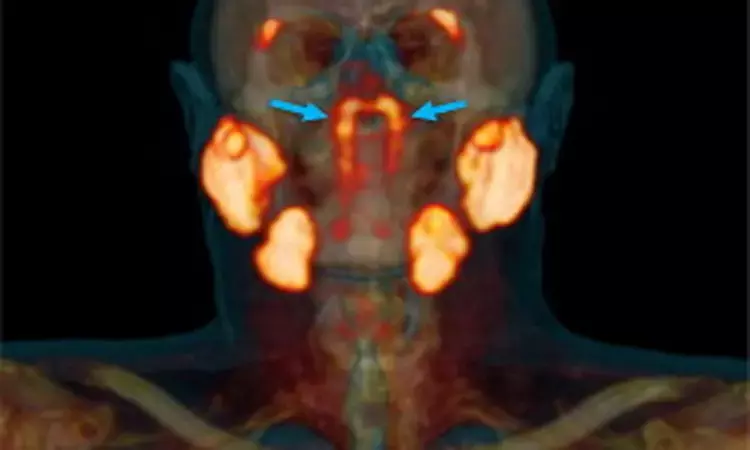- Home
- Medical news & Guidelines
- Anesthesiology
- Cardiology and CTVS
- Critical Care
- Dentistry
- Dermatology
- Diabetes and Endocrinology
- ENT
- Gastroenterology
- Medicine
- Nephrology
- Neurology
- Obstretics-Gynaecology
- Oncology
- Ophthalmology
- Orthopaedics
- Pediatrics-Neonatology
- Psychiatry
- Pulmonology
- Radiology
- Surgery
- Urology
- Laboratory Medicine
- Diet
- Nursing
- Paramedical
- Physiotherapy
- Health news
- Fact Check
- Bone Health Fact Check
- Brain Health Fact Check
- Cancer Related Fact Check
- Child Care Fact Check
- Dental and oral health fact check
- Diabetes and metabolic health fact check
- Diet and Nutrition Fact Check
- Eye and ENT Care Fact Check
- Fitness fact check
- Gut health fact check
- Heart health fact check
- Kidney health fact check
- Medical education fact check
- Men's health fact check
- Respiratory fact check
- Skin and hair care fact check
- Vaccine and Immunization fact check
- Women's health fact check
- AYUSH
- State News
- Andaman and Nicobar Islands
- Andhra Pradesh
- Arunachal Pradesh
- Assam
- Bihar
- Chandigarh
- Chattisgarh
- Dadra and Nagar Haveli
- Daman and Diu
- Delhi
- Goa
- Gujarat
- Haryana
- Himachal Pradesh
- Jammu & Kashmir
- Jharkhand
- Karnataka
- Kerala
- Ladakh
- Lakshadweep
- Madhya Pradesh
- Maharashtra
- Manipur
- Meghalaya
- Mizoram
- Nagaland
- Odisha
- Puducherry
- Punjab
- Rajasthan
- Sikkim
- Tamil Nadu
- Telangana
- Tripura
- Uttar Pradesh
- Uttrakhand
- West Bengal
- Medical Education
- Industry
Researchers discover new organ, might help in cancer treatment

PSMA PET/CT indicated a previously unnoticed pared nasopharyngeal macroscopic salivary gland.
Netherlands: In breakthrough research, researchers from the Netherlands have discovered a potential new organ in the human throat while carrying out research on prostate cancer. The newly discovered salivary glands (named tubarial salivary glands) are located in the space where the nasal cavity meets the throat.
The findings of the study were published in the journal Radiotherapy and Oncology.
The presence of the glands was confirmed after examining at least 100 patients. So far, this nasopharynx region (behind the nose) was not thought to host anything but microscopic, diffuse, salivary glands.
According to Matthijs H. Valstar, Netherlands Cancer Institute, the Netherlands, and colleagues, this discovery may be important for cancer treatment. The aim of the study was to elucidate the characteristics of this unknown entity and its potential clinical implications for radiotherapy.
The presence and configuration of the PSMA-positive area was evaluated in a retrospective cohort of consecutively scanned patients with prostate or urethral gland cancer (n = 100). Morphological and histological characteristics were assessed in a human cadaver study (n = 2). The effect of radiotherapy (RT) on salivation and swallowing was retrospectively investigated using prospectively collected clinical data from a cohort of head-neck cancer patients (n = 723). With multivariable logistic regression analysis, the association between radiotherapy (RT) dose and xerostomia or dysphagia was evaluated.
Key findings of the study include:
- All 100 patients demonstrated a demarcated bilateral PSMA-positive area (average length 4 cm).
- Histology and 3D reconstruction confirmed the presence of PSMA-expressing, predominantly mucous glands with multiple draining ducts, predominantly near the torus tubarius.
- In the head-neck cancer patients, the mean RT dose to the gland area was significantly associated with physician-rated post-treatment xerostomia and dysphagia ≥ grade 2 at 12 months (0.019/gy, 0.016/gy).
- Follow-up at 24 months had similar results.
"The human body contains a pair of previously overlooked and clinically relevant macroscopic salivary gland locations, for which we propose the name tubarial glands. Sparing these glands in patients receiving RT may provide an opportunity to improve their quality of life," concluded the authors.
The study, "The tubarial salivary glands: A potential new organ at risk for radiotherapy," is published in the journal Radiotherapy and Oncology.
DOI: https://www.thegreenjournal.com/article/S0167-8140(20)30809-4/fulltext
Dr Kamal Kant Kohli-MBBS, DTCD- a chest specialist with more than 30 years of practice and a flair for writing clinical articles, Dr Kamal Kant Kohli joined Medical Dialogues as a Chief Editor of Medical News. Besides writing articles, as an editor, he proofreads and verifies all the medical content published on Medical Dialogues including those coming from journals, studies,medical conferences,guidelines etc. Email: drkohli@medicaldialogues.in. Contact no. 011-43720751


